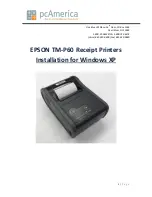
Functions
INSYS GSM small 2.0
11.7
Establishing or Accepting a CSD Data Connection
The INSYS GSM small 2.0 can call another modem via the GSM network and es-
tablish a CSD data connection. After dialling a phone number, the INSYS GSM
small 2.0 synchronises with the called modem and opens a data connection with
the transmission speed allowed by the GSM network. This is usually 9600 bit/s.
The speed, which is set at the serial interface of the INSYS GSM small 2.0 at the
time of connection establishment, will not be changed.
All incoming characters are transmitted to the other (called) modem during the ac-
tive data connection. Therefore, AT commands are not processed during a connec-
tion. The INSYS GSM small 2.0 must be changed to command mode again using
an "Escape sequence" that it processes AT commands again during an active con-
nection. Then, the local INSYS GSM small 2.0 processes the entered characters as
AT commands and does not transmit them to the remote terminal.
The INSYS GSM small 2.0 can accept an incoming connection in the same way. It
answers after the configured number of ring tones and opens a connection.
Configuration with AT commands
In order to establish a data connection with the
INSYS GSM small 2.0, use the command
Replace
<number>
with the phone number of
the remote terminal.
ATD<number>
If the remote terminal accepts the connection,
the INSYS GSM small 2.0 indicates
CONNECT
If the remote terminal accepts the connection
with error correction, the INSYS GSM small 2.0
indicates
CONNECT /RLP
If the remote terminal is busy, the INSYS GSM
small 2.0 indicates
BUSY
If a connection to the remote terminal cannot be
established, the INSYS GSM small 2.0 indicates
NO CARRIER
An incoming call is indicated with
RING
In order to accept an incoming connection, use
the command
ATA
44
















































